‘Wer reitet so spät durch Nacht und Wind?’
In the small hours, I awoke in the middle of a wind storm: entirely predictable.
I had tried my best to keep warm, dry and comfortable, readjusting my prone position on the small bench every 10 minutes or so. After only a few hours of restless sleep, the winds picked up, and I took shelter under the bench itself. I woke at 2:30am to howling winds. I was cold (due in part to sodden clothes) and there was little more I could do — sleep would not return. Around 3am, I started packing up and getting my wits about me in the dreich darkness of the forest path. Breakfasting on some cheese and ham left over from my supper, I soon set off through the middle of the forest, heading east towards Hainburg and the eerie orange glow in the distance.

Some time later, as I was walking alone through the woods, the dark of the night lifted; by the time I reached the bridge over the Danube towards Hainburg, the sun had risen and I stopped by the banks of the river on the edge of town. I followed a cycle lane to the side of an A road the rest of the way to Slovakia, though I did cut across some dirt tracks in farmers’ fields as I hazarded this would speed me along.


Just outside my final Austrian town of Wolfsthal (a fitting name for my last solidly Germanic town), I caught my breath on a secluded bench, appropriately situated by a fine example of a field-side crucifix. Sat there in the mid-morning sun, I began to feel my lack of sleep (and manic 10 days) catching up with me for the first time. I had to press on. Skirting the A road once again, I passed through Wolfsthal, closely noting the number plates which gave reference to their origins and through which I had tracked my daily progress through Germany and Austria; all this was drawing to an end. I soon crossed into Slovakia.
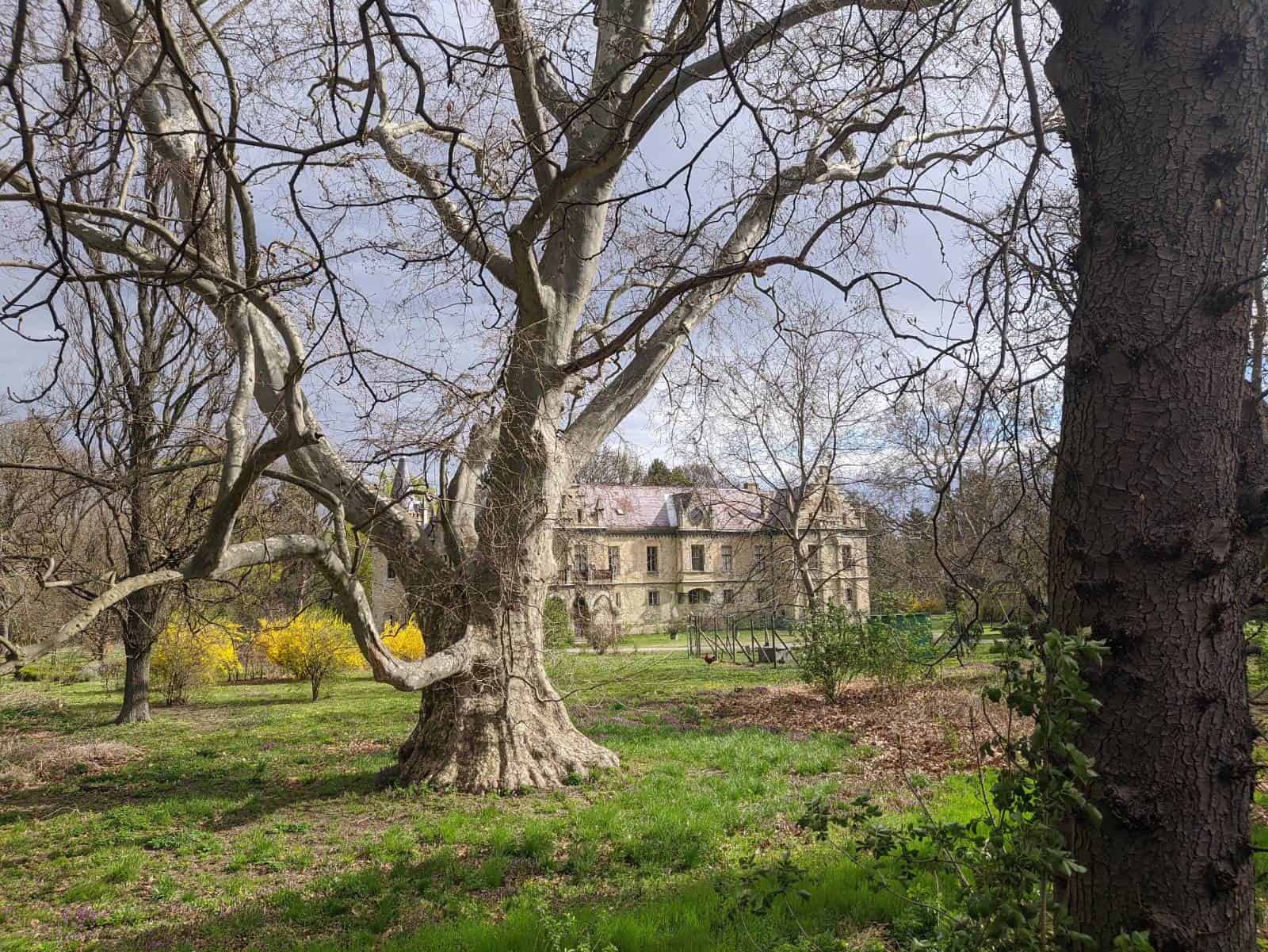
Bratislava
With the “Welcome to Slovakia” road sign hidden from the cycle lane, I settled for the next best thing: a selfie with the roadside Slovakian casino — the very same building obscuring the border. I walked under a main road and along the banks of the Danube towards the Bridge of the Slovak National Uprising, before finishing off last night’s provisions on a bench over looking the river and old town. Then, I crossed into the old town.


Checking into my hostel was an experience in and of itself. I arrived at 1pm to find the clutch of volunteers seated on sofas in the graffitied reception: half were day drinking and half were regretting the choices of the night before. Amusing chaos. After a tour of the hostel – the top two floors of a building right in the centre of the old town – a volunteer poured out two long shots of Borovička, a Slovak spirit. “Legend had it”, he told me, “that whether the liquor feels good or not reflects how the Slovakian people are feeling.” Well, in that moment, I could safely say the Slovakian spirt was in a pretty rough state.
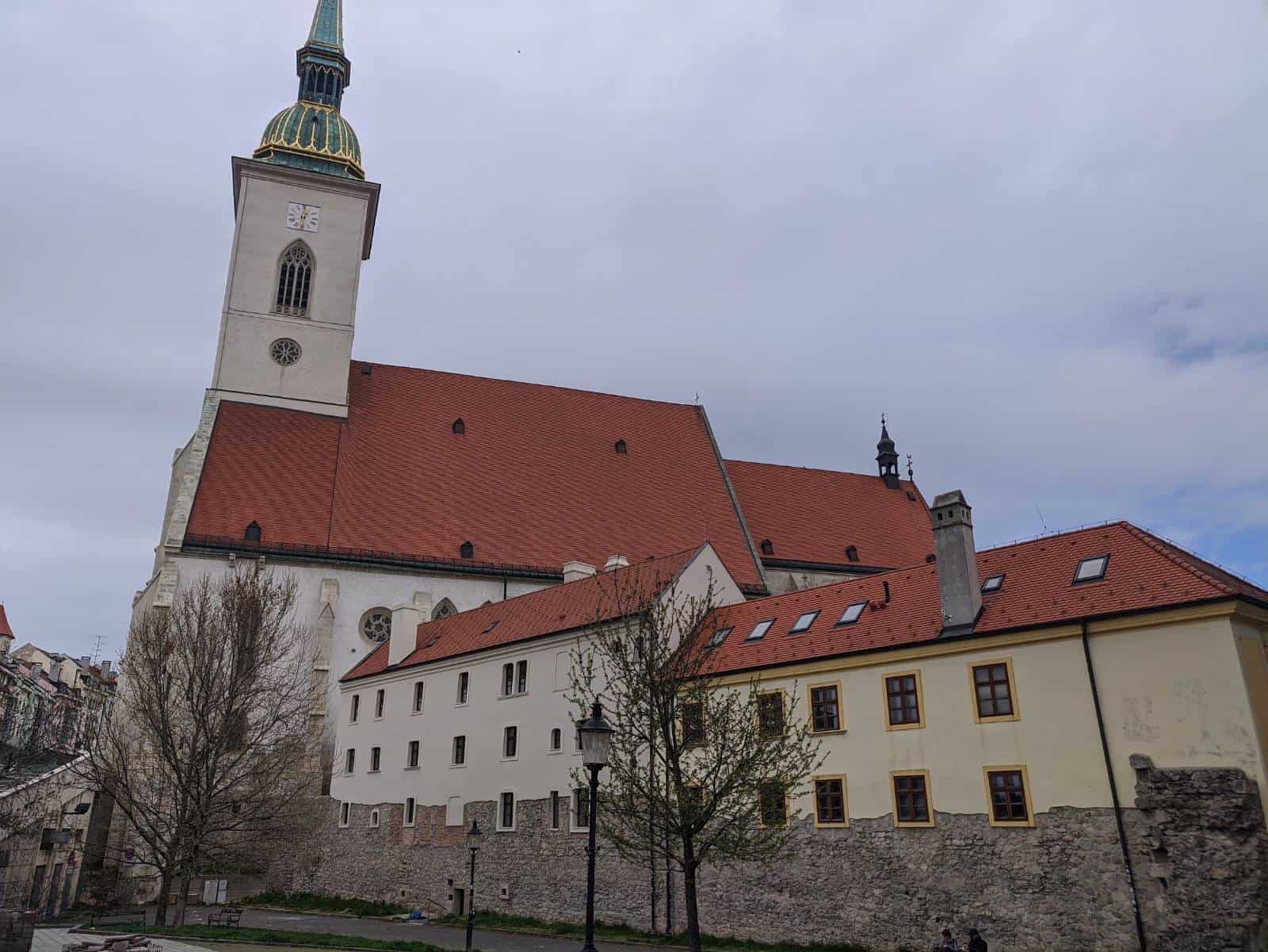
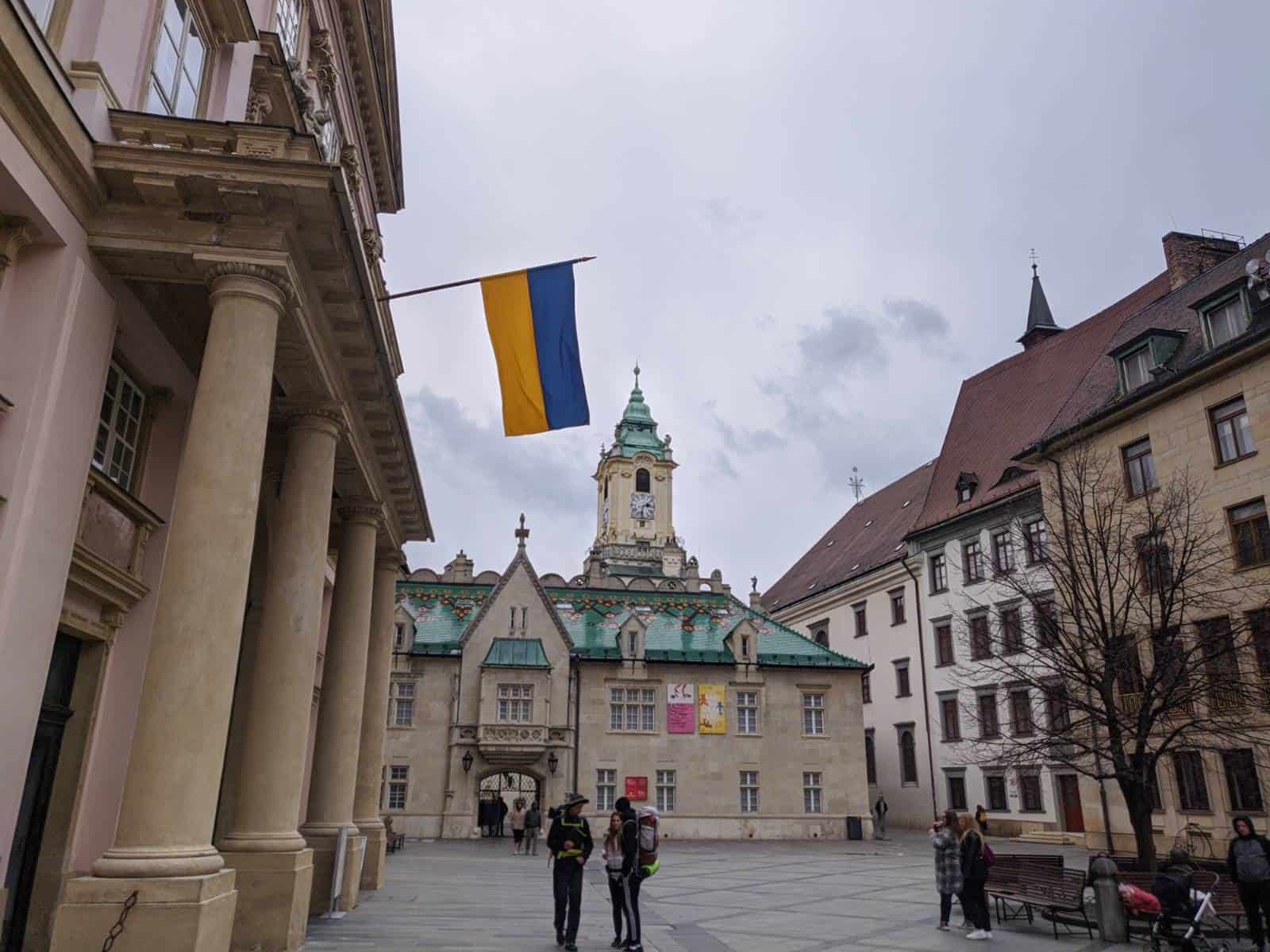
After grabbing lunch with a couple of dorm mates, I returned to my bed, and, after a short nap, we were summoned by a dinner bell. A bar crawl shortly followed: all part of the Bratislava experience.
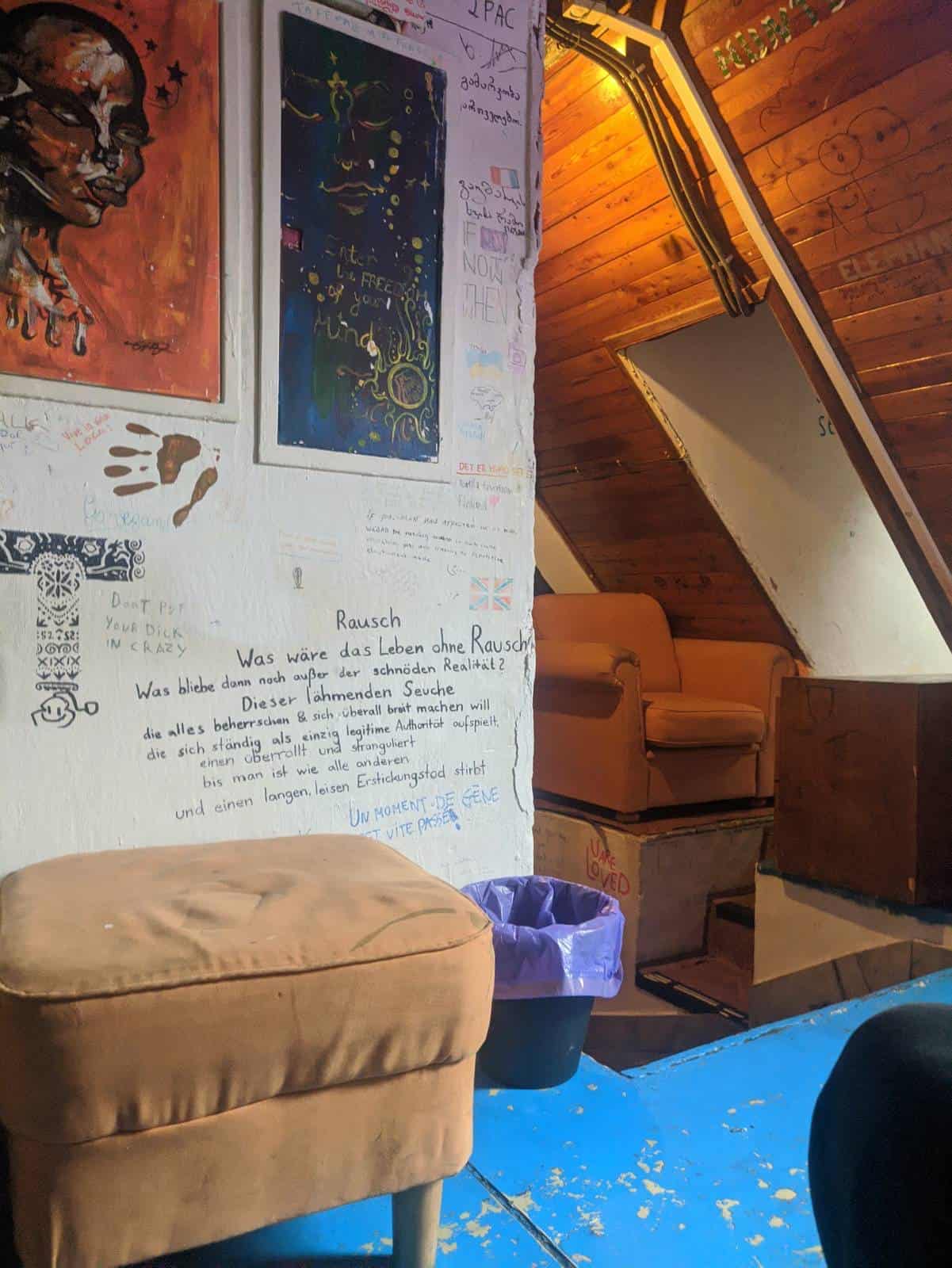
The next few days were a blur of tourism and long nights. By day, Bratislava’s old town is small but quaint; whimsical baroque streets and squares are filled with refurbished buildings, churches, and city palaces, all of which lie in the shadow of the old castle and the surrounding Communist-era developments. By night, the day-trip tourists have long gone and a rather more youthful generation of visitors explore the cobbled lanes under the cover of night and stars, touristing in their own distinctive ways. I had become utterly absorbed by these sudden plunges into the unknown and my early shyness was soon replaced by nerves of brass.



The distant fields look greener
With new friends made and after three “rest” days in the Slovakian capital, I tore myself away from the dens of “ye olde” urban world, and made for the expanses of the Slovakian Danubian paths. Crossing to the south side of the river, I cut through the communist blocks of the outer city – now painted in various bright colours – before following a hiking trail, along a line of WWII-era bunkers, out into the surrounding countryside.



The Danube becomes almost marsh-like around this point, with one discernible “Danube” surrounded by many narrow channels following along side in a distracted, roundabout fashion. For a couple of hours, I followed the trail of one of such channel through the Gajc nature reserve. Then later, inquisitive and not yet fully comprehending the nature of these channels in the grand scheme of things, I scrambled up the bank to the cycle path beside the main Danube; it was elevated away from me such that I initially mistook it for a hill and then reservoir. Upon my ascent back to the main body of the river, I was in for a view: this struck me as the widest point of any river on this trip thus far, pipping even the Rhine (which was probably at its widest on my route approaching Düsseldorf, and narrowed as it approached Koblenz.)
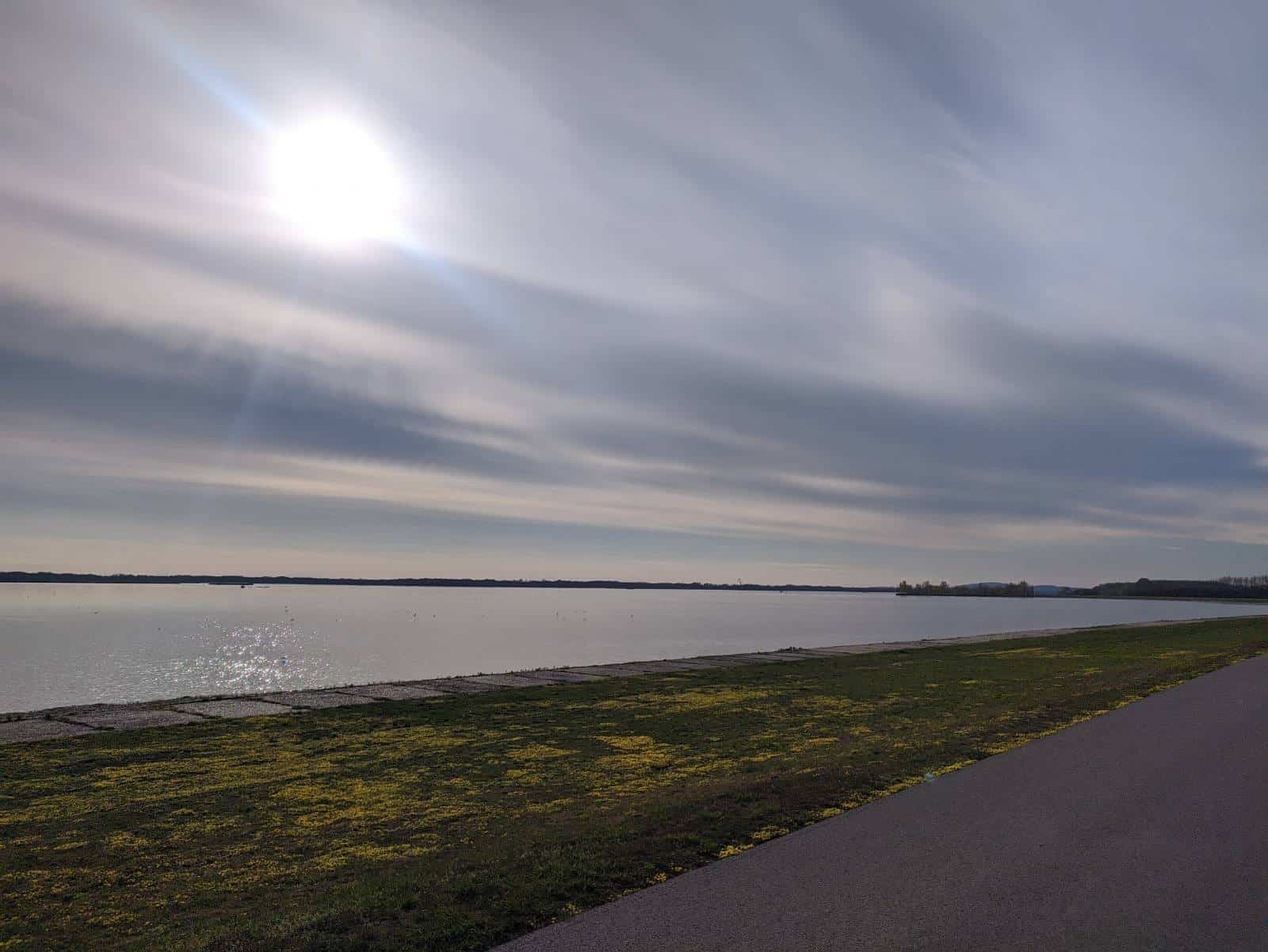
That day, I had walked out of the Bratislava region of Slovakia and into the Trnava region. I skirted the outskirts of Samorin where, to my immediate right, was the river, and to my far left, lay the communist town planning of the city in the distance. It was around this point where I realised that the land on the opposite (south) side of the river was no longer Slovakia, but Hungary (near Samorin this becomes the case)! A taster.
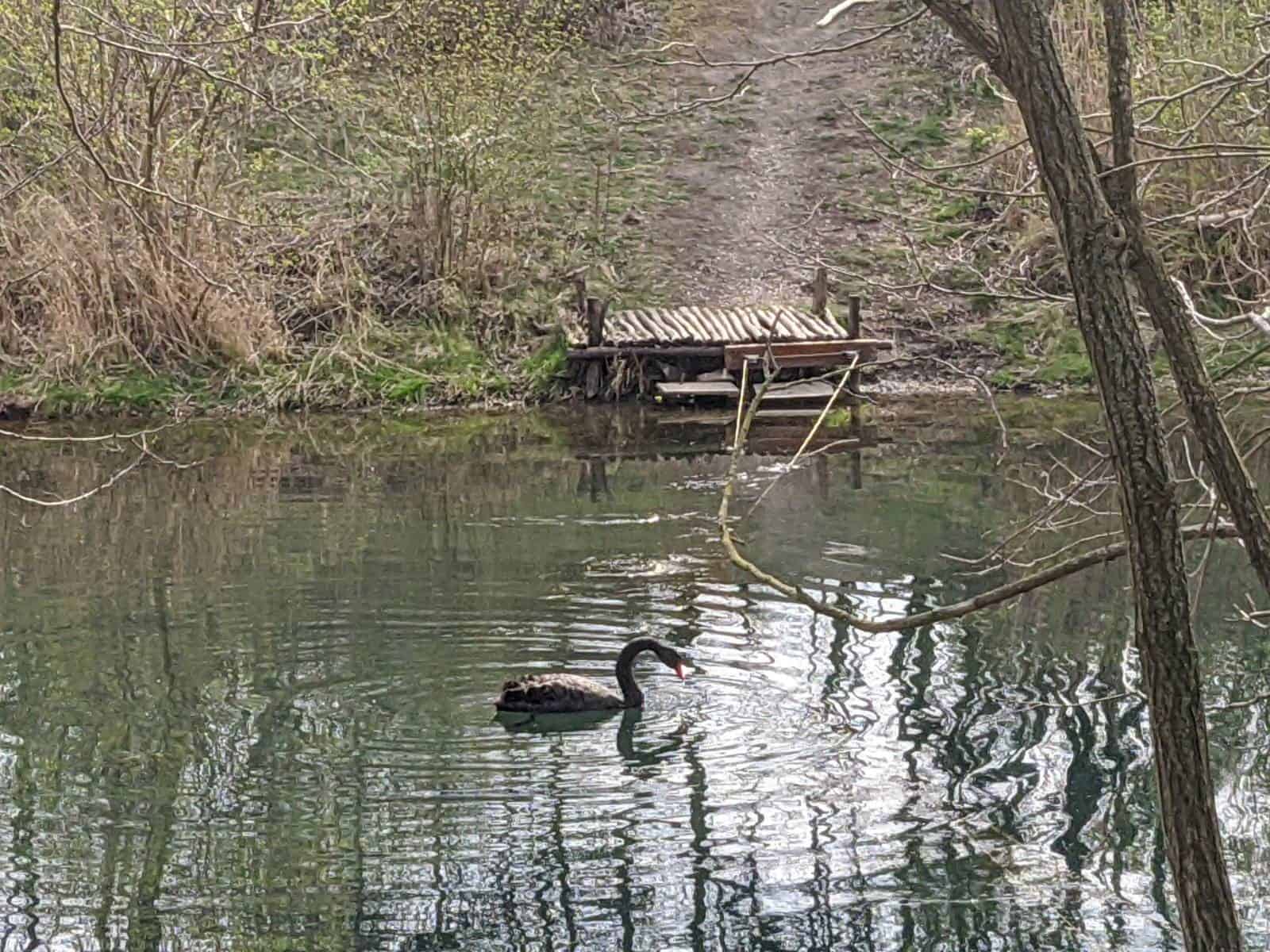
I noted the ever more exotic flora and fauna: brightly coloured lizards and insects accompanied me on my journey through the shrubbery. I came to the village of Báč around 7pm, and there found an austere pension with a bed. With no other eateries around and no supermarkets for several miles, I feasted on mushroom soup and a small side salad in the otherwise-empty restaurant downstairs. Around 9pm, the waitresses started stacking chairs and turning off the lights, and for a few short seconds I was lit by only the glow of my kindle’s backlight. I promptly got the message and headed back upstairs to my bed, and let exhaustion take hold.
Speed-run
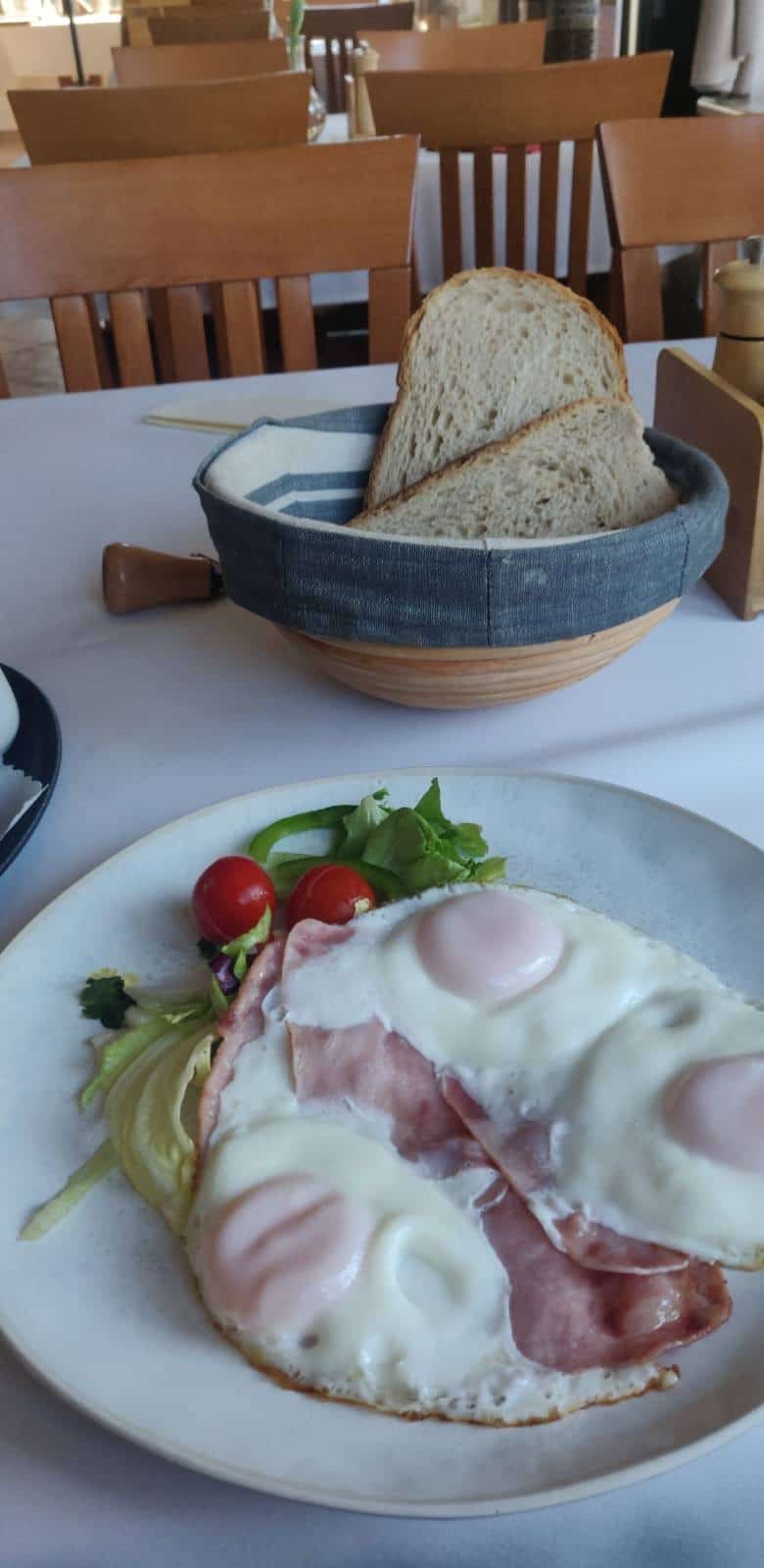
As I walked through the sleepy village of the amusingly named Horny Bar, the parish church tolled a light, crisp knell. I walked for a kilometre or so down the main track through the bungalows of town. A chorus of howling and barking from dogs of all shapes and sizes followed me through the village, eager greetings (or warding offs!). The dog whisperer.
Cutting inland through the town of Gabčikovo, I picked up a late lunch from Tesco — an unlikely reminder of home. (And no, UK clubcards sadly don’t work.) The pastry section stocked recently replenished sweets stuffed with jams and cream, fresh and warm from the oven. With the taste of berries and apricots still sugared on my lips, I continued with my off-river route; I was now walking along the sides of roads. By mid-afternoon, I found myself rather precariously trailing along a fairly busy A road. Shortly, I passed a police car pulled up by a crop of rapeseed. The policeman called out through the window to me. I put my very limited but developing Slovak to use: “Hovoríš po anglicky?”, I asked. Do you speak English?
In broken sentences, he asked where I was headed that day, and I answered, “Veľký Meder”: I was only a handful of miles away by now. A moment later, stepping out of the cab, he flagged down a passing bus and had a word with the driver. Ten minutes later I was deposited in the centre of Velky Meder. I was unsure whether the policeman had not been happy with my walking along the road, or whether this was a kindness. Given his jovial expression, I suspected the latter: he had denied me an hour or so of strenuous, roadside walking.
With little to see in town and a scarcity of cafes, I sat in a cocktail bar for a while as I figured out where to stay. Following a lead, I walked 15 minutes across town. Arriving at the unlikely destination, the gate wouldn’t open and the person on the end of the phone number I rang whilst in front hung up on me upon hearing me ask if she spoke English or German. When a bird flew out of the pension, I turned away. Reclined on a bench in a churchyard, I briefly considered making the bench my stay for the night, but soon thought better of it.
Eventually, I stumbled upon a cheap-as-chips single-room let at the other end of town. A minute white house stood at the edge of a long garden where three men sat smoking. After a while, an elderly lady turned up (another point of confusion, given it was a young sounding man with whom I had briefly spoken on the phone). She cheerily showed me to a cramped room at the back of what I thought she described as a communal apartment; she spoke no English and I no Slav that would be of any use — there are limits to how far “Hello”, “Goodbye”, and “Can I pay with card?” can get you. My suggestion we speak in German was the source of amusement. The lady continued the tour and speaking at me, whilst I listened for familiar vowels; it was a struggle, but all I could really do was repeat the odd words she said back at her. “Dobra?” she would say, and I would look back at her with a bemused, intigued countenance, and she would move on with the tour.
Soon, as if by magic, an elderly man – who I assumed rightly was her husband – also emerged. I tried to ask how I was to pay, but the old man was busy, eagerly showing me the wifi code. He was very keen: it was all very sweet and confusing — the ideal blend, I guess. The man sought me out later to take payment, a meger fee; he opened up his tome of a checking book, logged my details, and accepted my cash. A predictably unproductive attempt at small talk followed. He showed me for a third time how the keys worked, before he and his wife bade me goodnight. “Dobrú noc!”, they called, as they wobbled off down the garden. The old man suddenly remembered something: “Wifi, wifi? Dobre??”
“Áno, áno, dobre”, I said. “Ďakujem.”
Yes, yes, okay. Thank you.
Having supped the previous night on Tesco’s finest pot noodles, I left town bright and early. Dull roadside walking made up the majority of the day, and I arrived relatively quickly at Komárno, the largest town I had passed through since Bratislava. I arranged to stay in a cheap lodging above a restaurant on the eastern suburbs of town, just over the river Váh. I headed over there around 4:45 and had a beer in the restaurant below my room. Back in town, I dined on pizza and salad, savouring the extra calories.


Later that night, I perched on a bike rack for a long while overlooking the river by my lodgings, observing the murky wafts of clouds above.

Hungarian mountains loom large
In the early afternoon the next day, the tall hills on the opposite bank slowly grew; soon, mountains coated in greenery began to rise up on the south side of the river, in Hungary — the Gerecse Mountains, part of the Transdanubian mountain range. A long day of happy walking drew me closer and closer to my next border: this 30.5 mile day would be my longest for the trip and my life, so far. Not long later, as I rounded a subtle bend in the river path, a bright blue cupola rose into view ahead on the opposite bank, across the becalmed waters of the Danube — the Basilica of Esztergom, seat of the Primate of all Hungary. I was close.
I reached Štúrovo, my last Slovakian town, around 5:30pm. The town is situated just on the opposite side of the river from Esztergom, and holds unobstructed views across the river, taking in Esztergom’s basilica and the mountains beyond. Not only was I shortly leaving Slovakia for Hungary, but another landmark moment loomed: I was leaving the Eurozone behind me. Thus, the challenge that day had been to mop up the remainder of my cash: I put my final few Euro coins together and used them up on a celebratory Slovakian beer. For the next few weeks, it would be the Hungarian Forint.
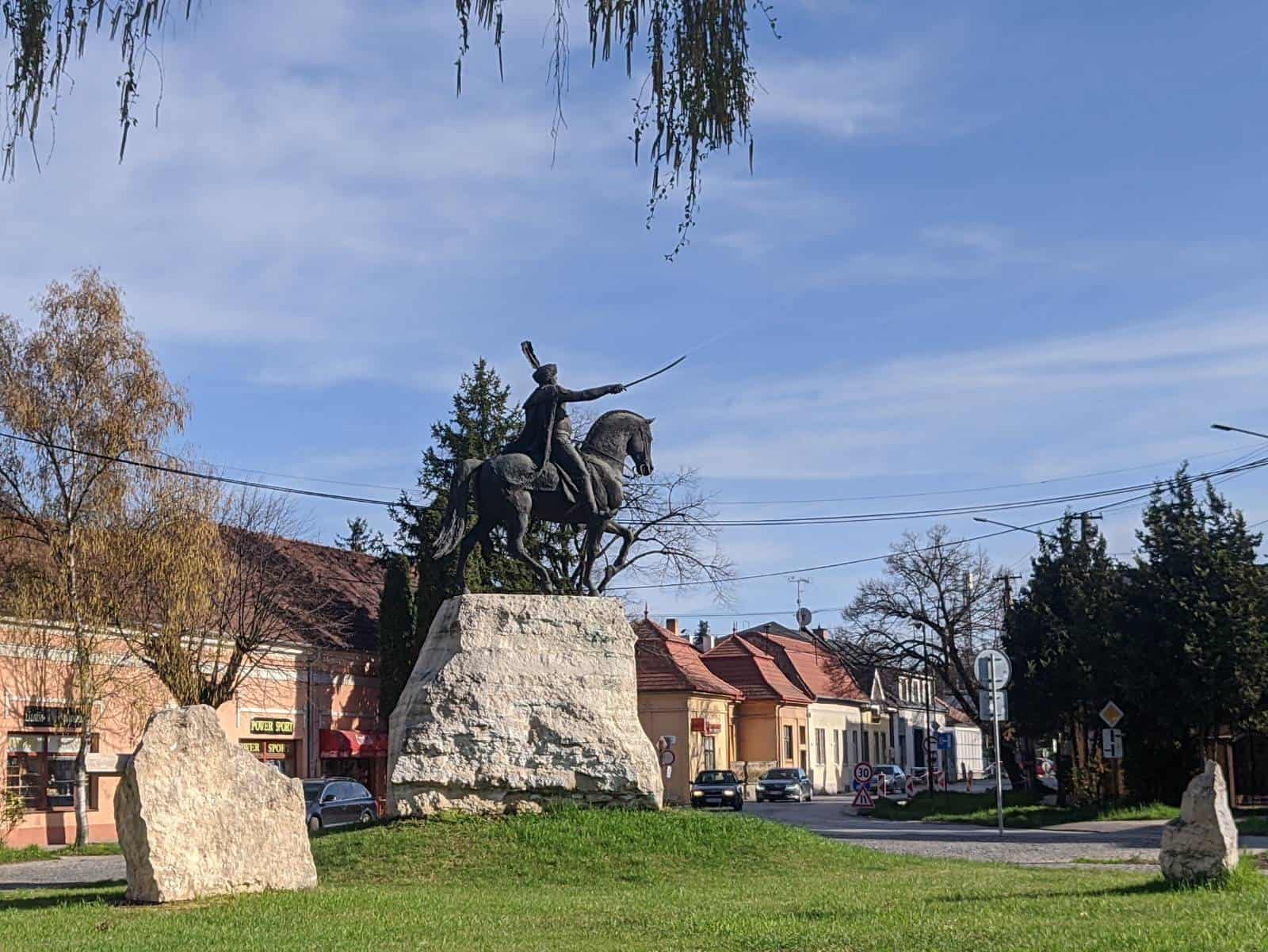
Arriving in Hungary as I was, on the eve of Easter Friday, it seemed fitting that I was crossing into the de facto centre of Catholicism in Hungary, Esztergom being the seat of the Archbishop of Esztergom-Budapest, the Prince-Primate of Hungary. I was arriving primed for the Easter weekend, just as Paddy did 90 years ago.


My thirst quenched and my pockets lighter, I headed through town towards the 19th century Maria Valeria bridge. With the sun not quite yet setting, and splendid views out across the Danube, Slovakia, and Hungary, I made my way across the iron bridge and into the realm of the Magyar.


I remember being sat in a bar in Prague with your Dad trying to spend their currency for two/three hours with two Canadian girls and we couldn’t do it! We tried about ten quid and just got sloshed! That was 1991! Next stop, I think, was Northern Italy. But my memory is hazy. May be that night in the bar!
Brilliant as usual what an experience
All my love Granny xxxx
Greetings. I have just logged on to your site and read your notes so far. Good stuff. I envy you. Jeffrey from Coffs Harbour New South Wales in the land of Oz.
Many thanks, Jeffery!
Well done – read your blog for the first time today – well written – keep writing. Thanks to Tom for connecting me. I enjoy long walks and followed Paddy’s route across Crete some years ago. Now Honorary Consul of Hungary. Best wishes. Alun
Thank you, Alun. I hope you enjoy the rest of my walk!
As others have said, this is a great adventure for you. One tiny suggestion that would add a little more color is if you would take some pictures of the locals .. also more of the food .. the animal encounters .. odd bits. The actual rooms where you are staying . how they are decorated and a view from the windows. I know it is hard to ask someone if you could take their picture .. but I think they would be flattered .. Just love reading your blog!! It reinforces to me and your readers that folks really are the same the world over.
Thank you for your comment and suggestions, Nelly. I have been increasingly trying to take more of those sorts of photos, but haven’t always uploaded them! I’ll try to include more in upcoming posts.